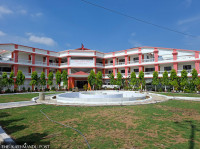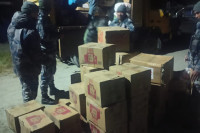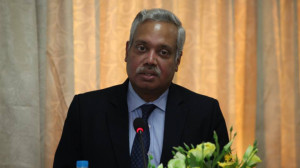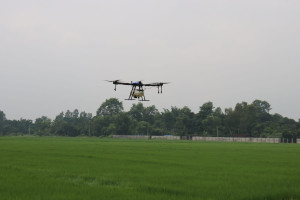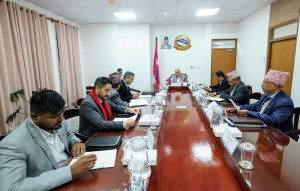National
Drought-stricken farmers in Sindhupalchok villages are leaving farmlands fallow
The Agricultural Knowledge Centre in Kavrepalanchok says a large portion of Sindhupalchok’s rain-dependent farmland remains uncultivated.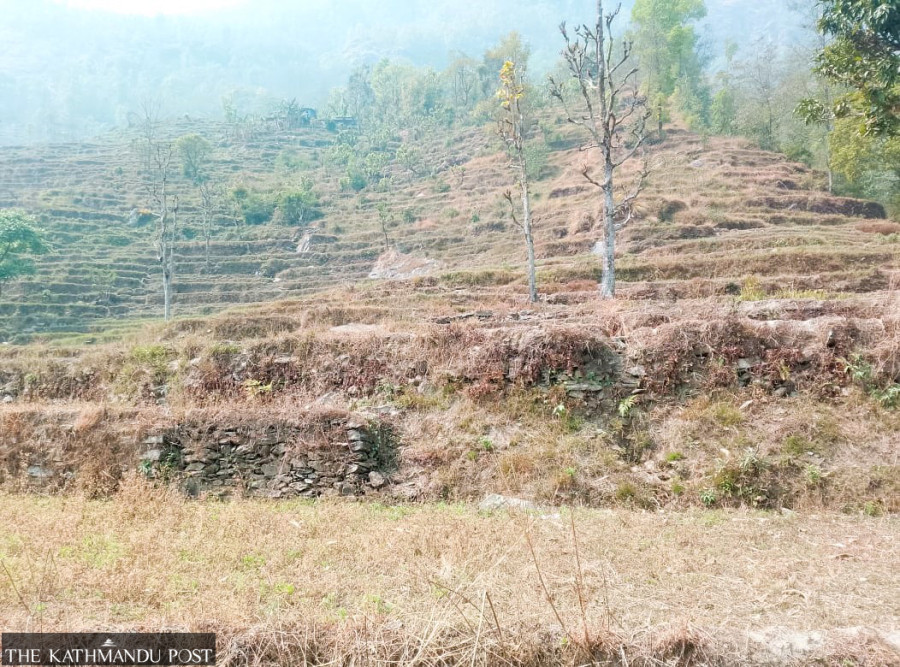
Anish Tiwari
The once-fertile farmlands of Ramche in ward 9 of Bahrabise Municipality now lie fallow and desolate due to a severe water crisis. These lands, which would be adorned with mustard and vegetables during this season until a few years back, are uncultivated.
Farmers are unable to cultivate their land and grow crops and vegetables due to unreliable rains and lack of irrigation. Even the nearby Andheri stream is gradually drying up due to reduced rainfall. As traditional water sources gradually disappear, local farmers are struggling to sustain their crops, leaving their fields fallow.
With the prolonged drought, residents are scrambling to collect water from stone spouts, leading to frequent disputes. "The main reason for leaving our fields barren is the lack of water," said Lal Bahadur Poudel, a local farmer. "We haven’t had rain in a long time and now with drinking water scarce, people are desperately searching for new sources." According to him, winter rain is uncertain, causing a long drought in recent years.
The water shortage has severely impacted vegetable farming, with crops withering before harvest. Many farmers had hoped for rainfall to restore their fields but with no relief in sight, frustration is mounting. In the upper areas of Archale, over 40 ropani (2.03 hectares) of land remain uncultivated while neighbouring villages such as Sahele also face a similar crisis. Once-thriving farmlands in Sahele Khet, Dandabari and Setidevi Temple areas are now dry and unproductive.
Local farmer Chakradhwaj Tiwari recalls the time before the 2015 earthquake when the region was lush with millet, maize and fruit orchards. "Before the earthquake, Sahele was a vibrant settlement with dozens of houses. But after the disaster, as people focused on rebuilding, water shortages forced them to relocate to lower areas with better access to water and other amenities."
Currently, 14 families in the Sahele area are facing acute water shortages. Srijana Khadka, chairperson of Janamukhi Farmers’ Group in ward 9 of Bahrabise, expressed her frustration over repeated pleas to local representatives for irrigation solutions. "Farming in Dashmure fields has become nearly impossible due to the lack of irrigation. Many people have abandoned cultivation altogether." According to her, 29 families in the area are struggling due to the lack of irrigation and drinking water.
The Agricultural Knowledge Centre in Kavre reports that a significant portion of cultivable land in Sindhupalchok, a hill district of Bagmati Province, remains barren due to reliance on rainfall. Even in district headquarters Chautara and along the Araniko Highway, many once-fertile lands are now uncultivated.
Farmers in Jalbire, a region known for its fertile soil, and in western Melamchi have also abandoned their fields. The situation is equally dire in Batase and Syauli, where land that once produced abundant crops now lies unused.
As per the data available at Agricultural Knowledge Centre in Kavrepalanchok, Sindhupalchok has a total of 73,710 hectares of arable land, but only 47,400 hectares are actively cultivated. Statistics reveal that around 36 percent of the district’s arable land remains barren. Among the cultivated land, only eight percent has year-round irrigation, while 25 percent benefits from seasonal irrigation, totaling just 33 percent of the district’s farmland under irrigation coverage.
In recent years, the percentage of uncultivated land has been rising. The situation worsened in the post-earthquake after many water resources dried up. Sindhupalchok is the worst hit district by the 2015 earthquake with 3,423 deaths. The district is often affected by monsoon-induced disasters like floods and landslides.
According to environmentalist Ravindra Raj Niraula, the drying up of water sources is primarily due to climate change. Having conducted extensive environmental and geological studies in the Melamchi region, he explained that alterations in snowfall patterns have disrupted groundwater recharge.
"Climate change has led to irregular rainfall and snowfall, reducing groundwater replenishment and causing water sources to dry up," he said. His post-2015 earthquake study in Helambu, at 2,000 meters above sea level, revealed a significant decline in water sources. He emphasised that long-term data confirms climate change as the key factor behind shifting rainfall and snowfall patterns.




 19.12°C Kathmandu
19.12°C Kathmandu
